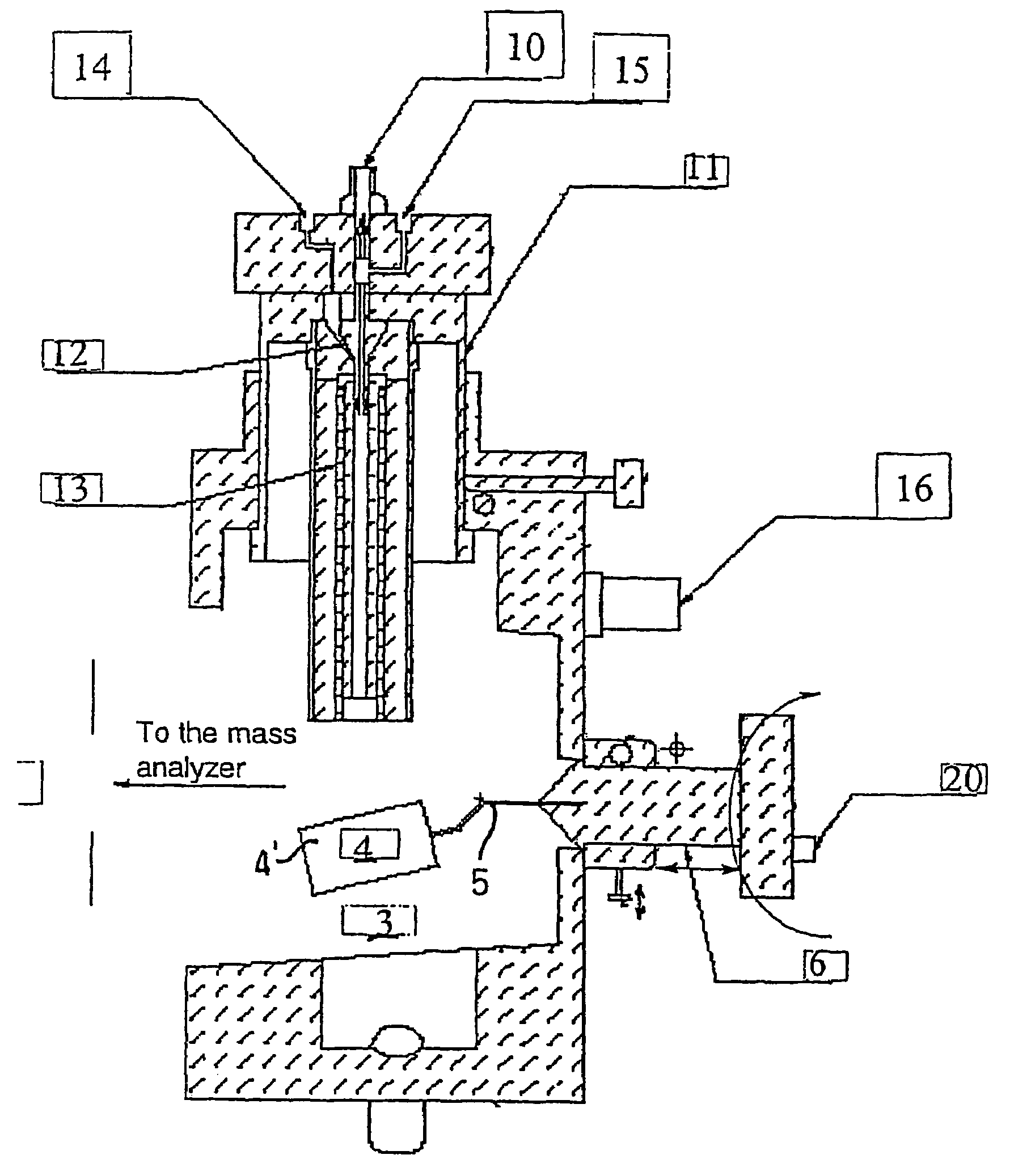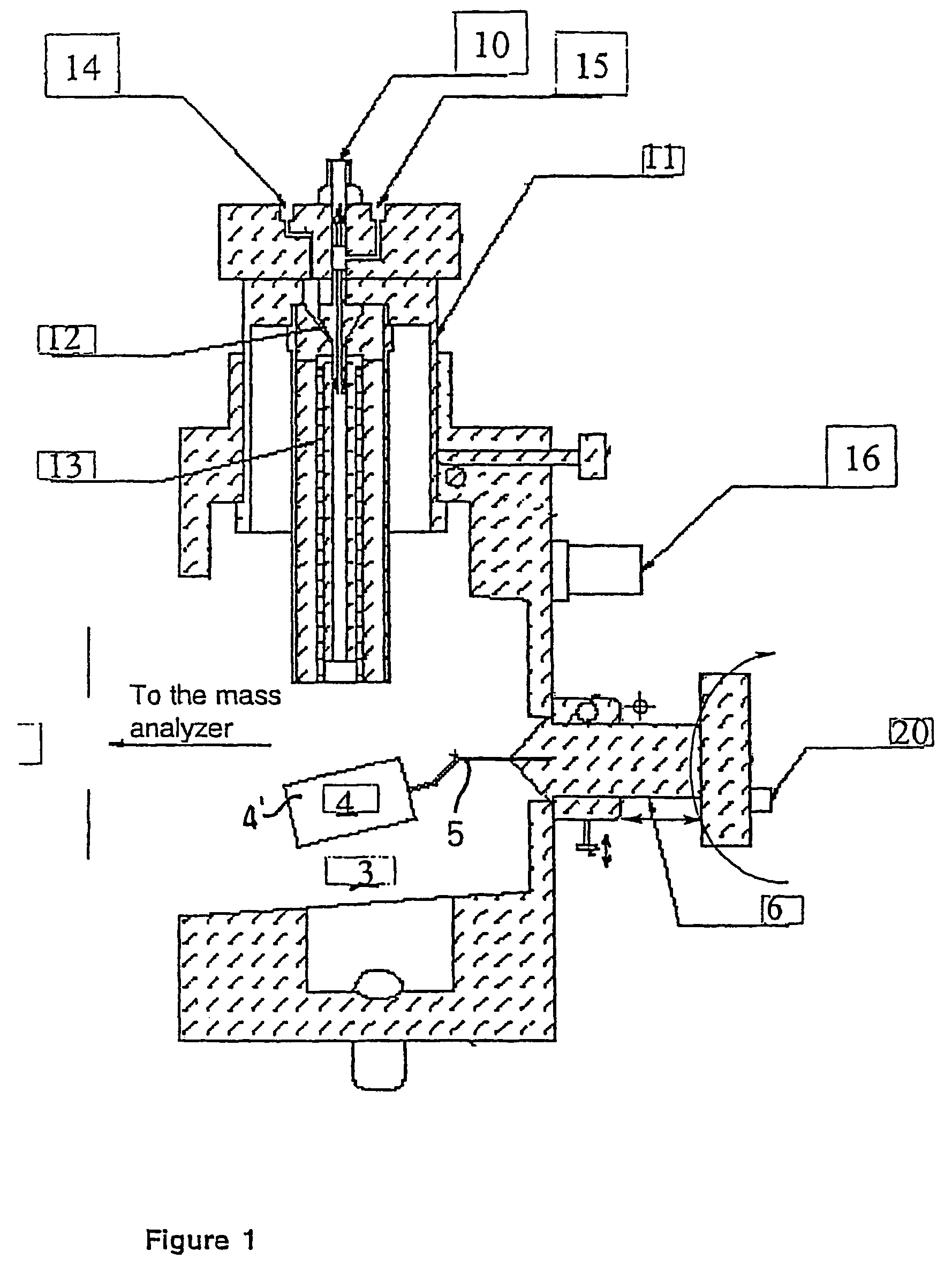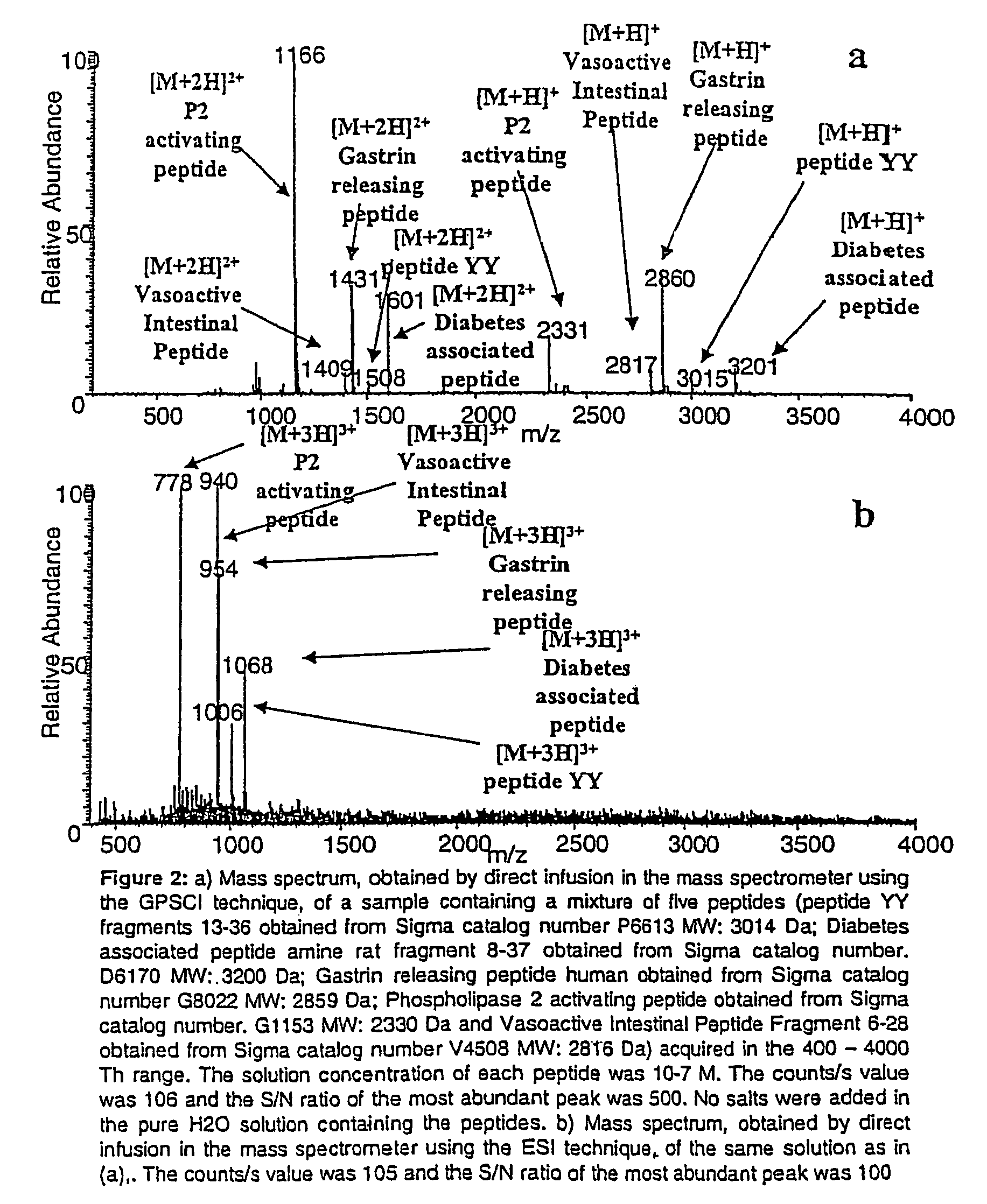Ionization source for mass spectrometry analysis
a mass spectrometry and ionization source technology, applied in the field of mass spectrometry, can solve the problems of reducing the sensitivity of esi and maldi techniques, affecting the accuracy of mass spectrometry analysis, and wasting time in analysis
- Summary
- Abstract
- Description
- Claims
- Application Information
AI Technical Summary
Benefits of technology
Problems solved by technology
Method used
Image
Examples
example 1
The Observation of Ions in the High Mass Range
[0064]A 10−7 M solution of Cytochrome C protein (MW: 12361) has been analyzed by direct infusion. FIG. 3a shows the protein signals obtained using the new SACI ionization source. The mono-charge, bi-charge and tri-charge ions were clearly detected using positive acquisition mode. This compares with results on the same solution achieved by the use of the ESI ionization source (FIG. 3b). In this latter case no multicharge distribution was detected in the 4000-14000 Th range. In fact signals obtained in this region of the spectrum by the use of the ESI ionization source are due to the chemical noise of the solvent. It is well known that the ESI ionization source cannot be used to analyze molecules with high molecular weight and low charge. Thus the ESI technique has serious limits for analyzing biological molecules with high molecular weight (like proteins). In order to overcome this limitation the MALDI ionization source is used since. The...
example 2
An Application of SACI Technique to the Analysis of High Molecular Weight Peptides
[0065]Five high molecular weight standard peptides with molecular mass in the 2000-4000 Da range were analyzed. The results obtained using the SACI source are shown in FIG. 2a. As can be seen the mono and bi-charge peptide ions were clearly detected. The peptides were analyzed also by a mass spectrometer using the ESI ionization source (FIG. 2b). In this case the tri-charge peptide ions are the most abundant species. These species are located in a region of the spectrum (500-1100 Th) in which the chemical noise is high leading to decrease the S / N ratio.
[0066]The mass analyzer used to perform both experiments was an ion trap (LCQXP, ThermoFinnigan, USA) able to detect the signals in the 100-4000 Th and 1000-20000 Th range. The mass acquisition range can also be extended by coupling the SACI ion source with other kind of mass analyzer (for example TOF or FT-ICR) provided with a high mass acquisition rang...
example 3
Increase in Sensitivity Provided by the New Ionization Source
[0067]The SACI ionization source first described in the present invention is characterized by a higher sensitivity, as compared to the ESI technique, in the analysis of liquid samples of proteins and peptides. FIGS. 2a and 3a show the spectra obtained by direct infusion of solutions of five high molecular weight peptides (FIG. 2a) and Cytochrome C (FIG. 3a). A LCQXP (ThermoFinnigan, USA) provided with SACI ionization source was used. The solution concentration of each standard peptide and of the Cytochrome C was 10−7 M and the counts / s value was 106 with a S / N ratio of the most abundant peak of 500 for the high molecular weight peptides and 300 for the Cytochrome C protein. The comparison of these results with those obtained, for the same solutions, using the ESI ionization source (FIGS. 2b and 3b) shows that the SACI ionization source increases the sensitivity. As can be seen for the case of the ESI spectra of the same hi...
PUM
 Login to View More
Login to View More Abstract
Description
Claims
Application Information
 Login to View More
Login to View More - R&D
- Intellectual Property
- Life Sciences
- Materials
- Tech Scout
- Unparalleled Data Quality
- Higher Quality Content
- 60% Fewer Hallucinations
Browse by: Latest US Patents, China's latest patents, Technical Efficacy Thesaurus, Application Domain, Technology Topic, Popular Technical Reports.
© 2025 PatSnap. All rights reserved.Legal|Privacy policy|Modern Slavery Act Transparency Statement|Sitemap|About US| Contact US: help@patsnap.com



